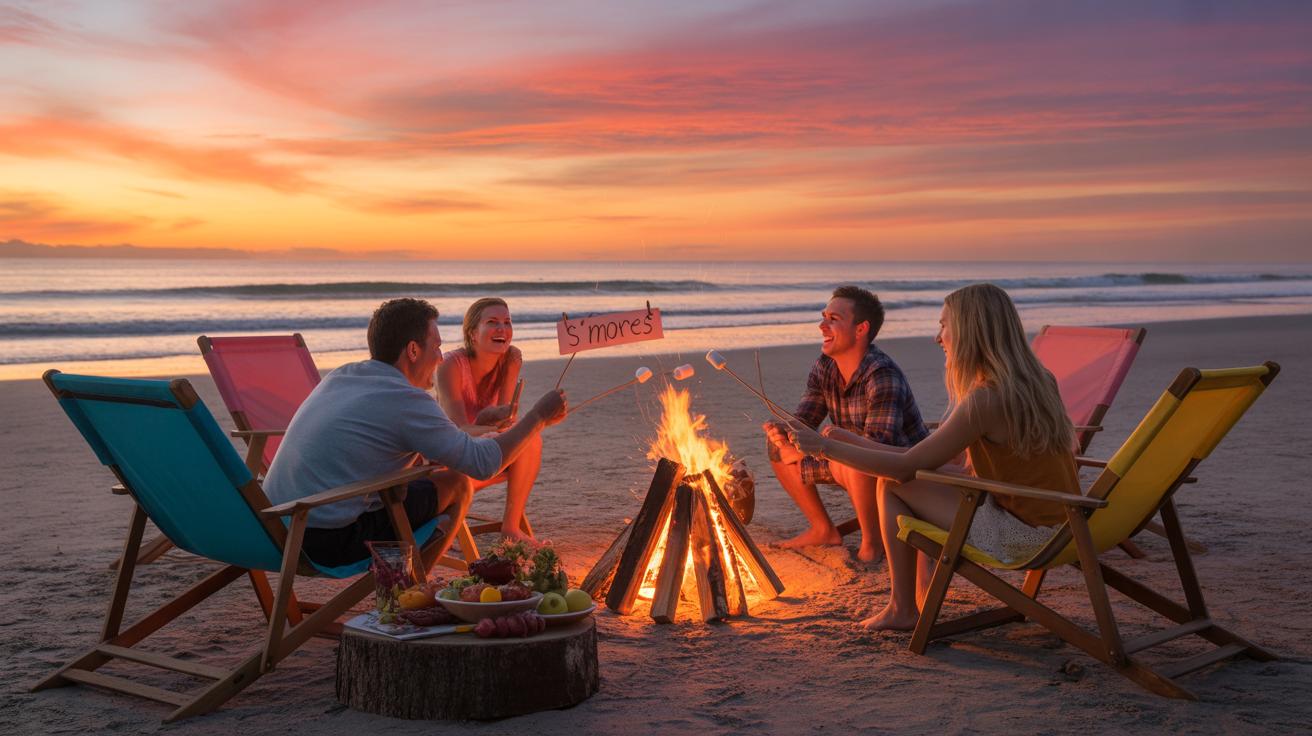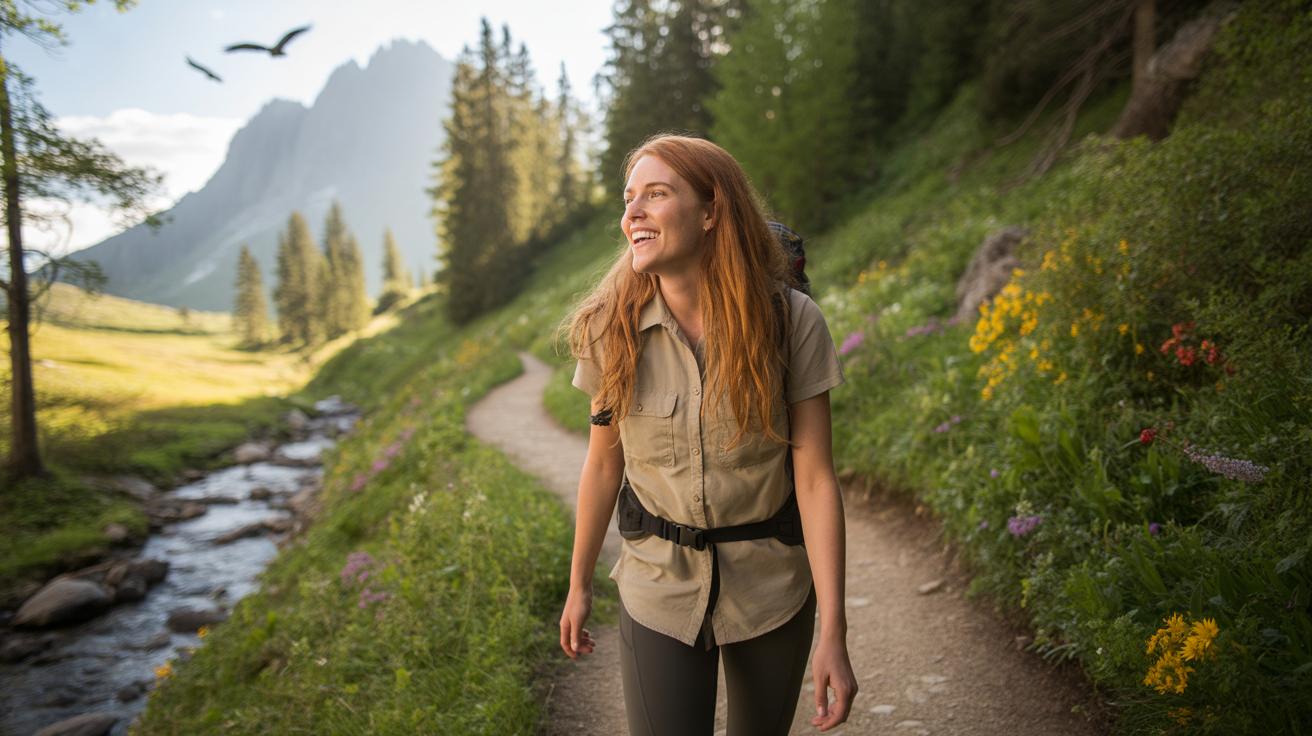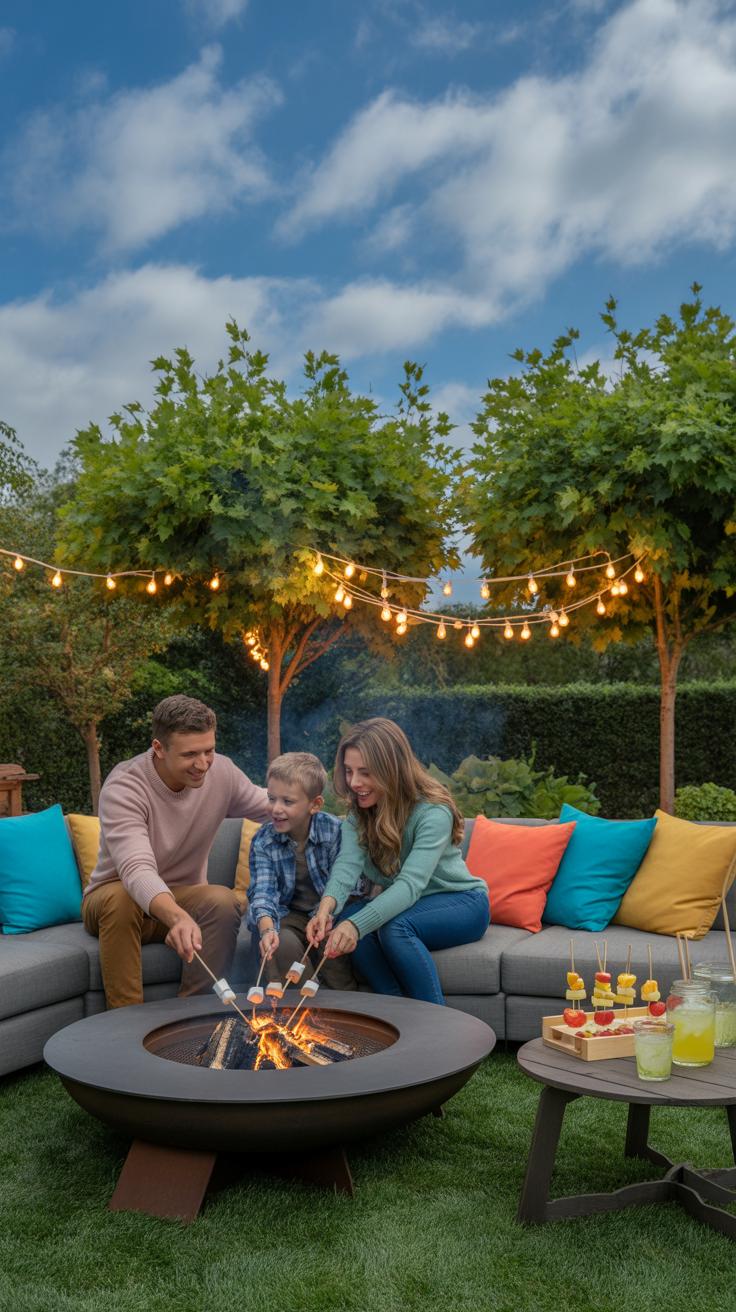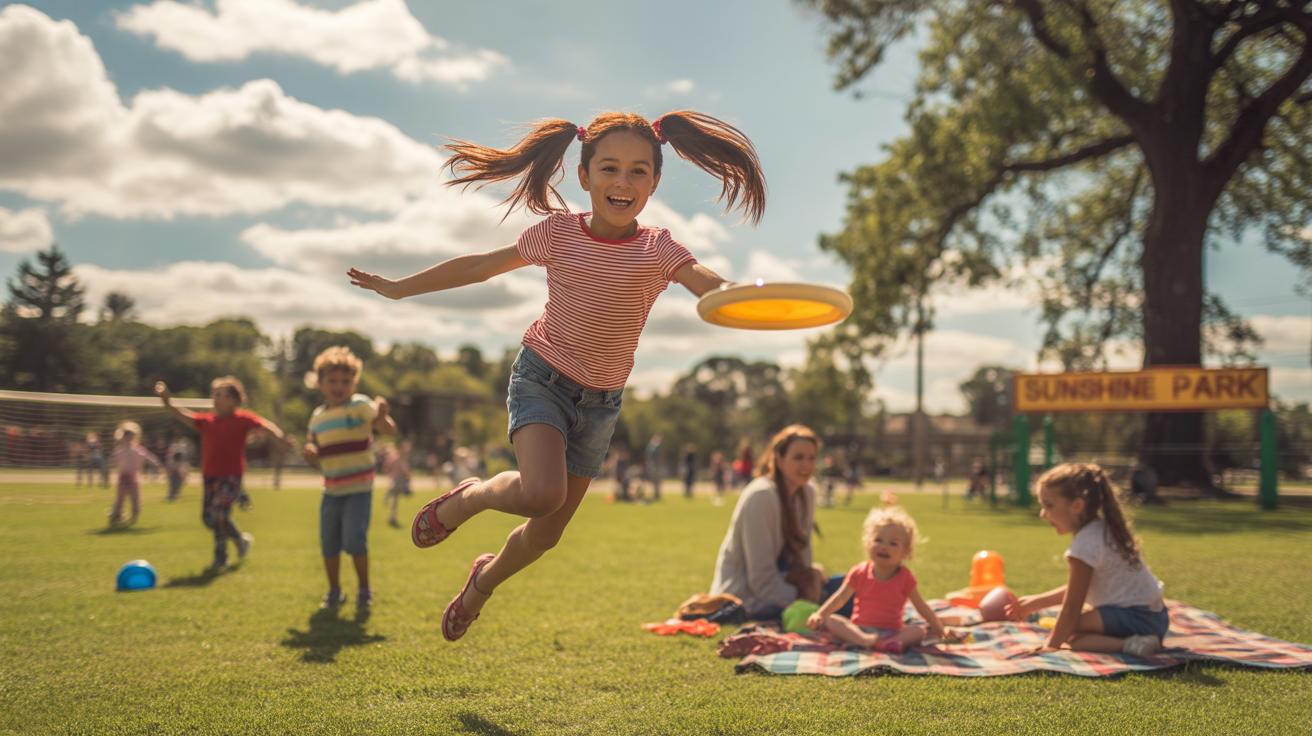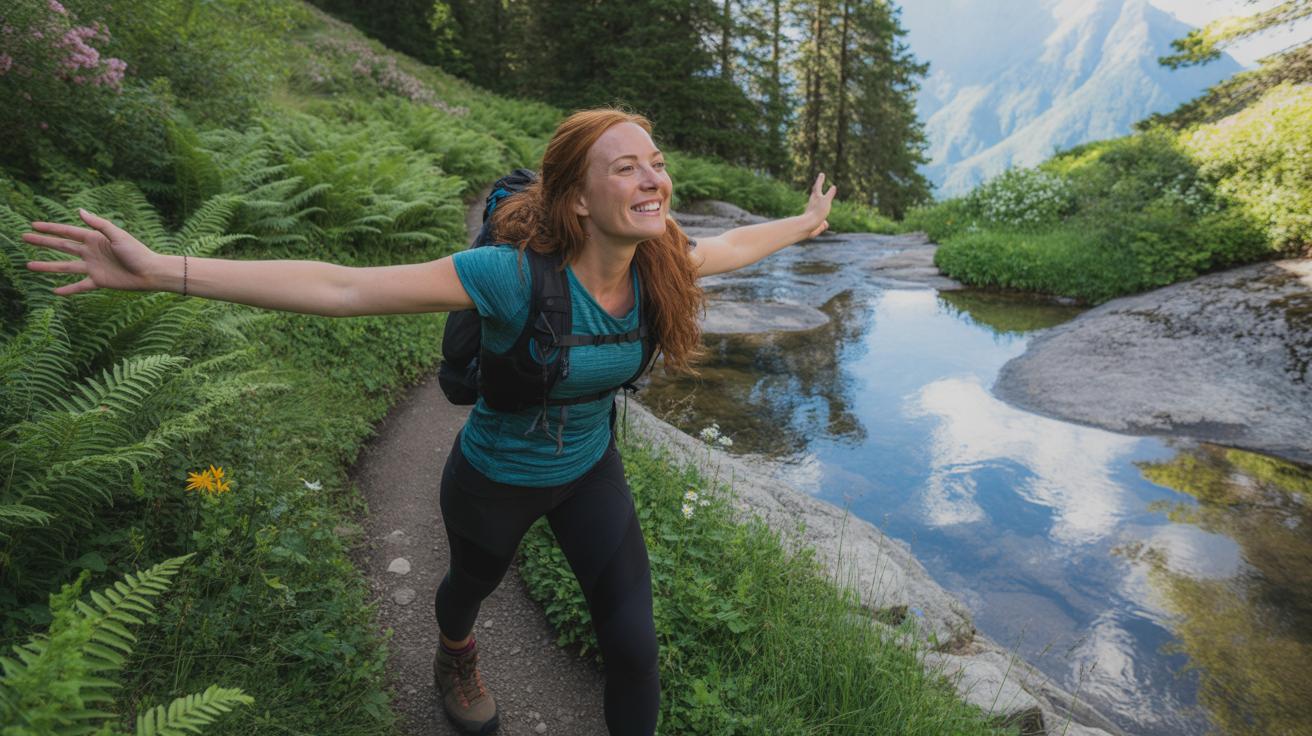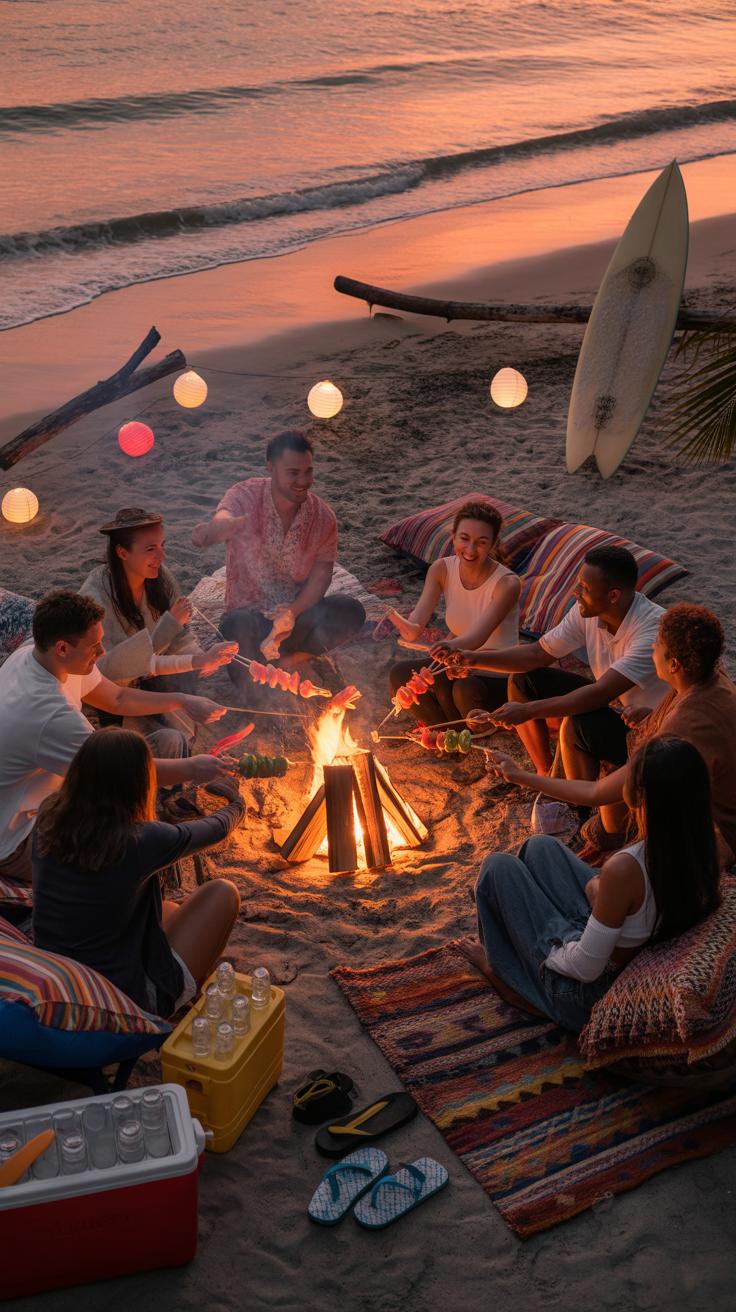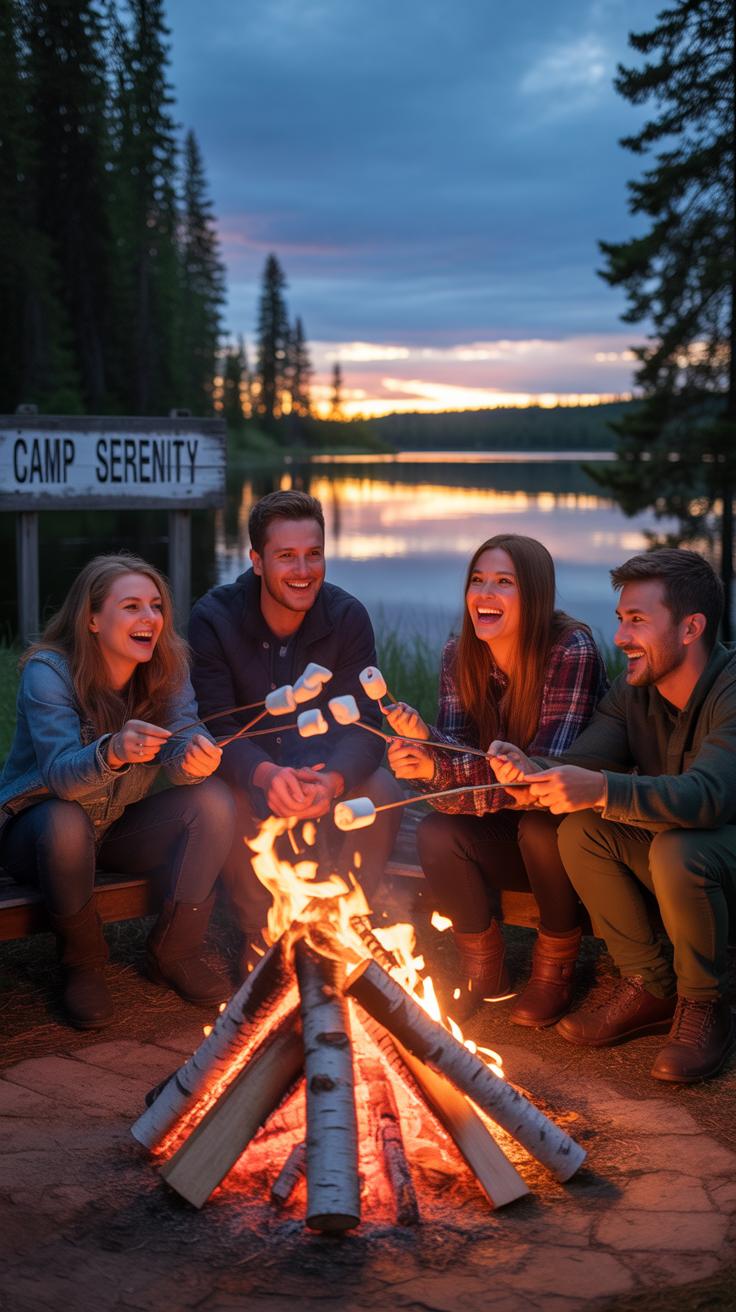Introduction
Beach bonfires bring people together. They create warmth and light. They turn any ordinary beach visit into a memorable event. If you enjoy outdoor activities, a beach bonfire can become a favorite tradition for you and your friends or family.
This article explores various ideas for beach bonfires. You will learn how to set up the bonfire safely, what to bring, what food and drinks are best, and how to keep the fire going. Let’s dive into practical tips for your perfect outdoor adventure.
Choosing the Location
Checking Rules and Permits
Before you even think about lighting that fire, you need to be sure that bonfires are allowed where you’re headed. Some beaches have strict regulations or even outright bans on fires. Checking these rules beforehand saves you from potential fines or awkward conversations with local rangers. Usually, this info can be found on the official website of the beach or local parks department. Sometimes calling the local visitor center is the easiest way — people often get hung up on a website that’s outdated or unclear.
Permits may be required. If so, deadlines and application processes vary widely. Don’t leave this to the last minute; you don’t want to show up only to be turned away. These rules exist for a reason, mostly tied to safety and preserving the environment, so taking the time to check feels like the respectful thing to do.
Spot Safety
Finding the right spot isn’t just about picking a flat place to sit around. Safety is multi-layered. For one, distance matters—a good spot keeps your fire well away from tents, people, and any gear. It’s surprisingly easy to underestimate how far sparks can fly or how tents catch stray heat. You want plenty of room for everyone to relax without worry.
Wind direction is another tricky piece. It’s not just about choosing a spot sheltered from wind but about being aware of how the breeze might carry smoke or even embers. Oddly enough, sometimes the calmest area isn’t best if smoke blows straight into your group’s faces.
Checking tide times is something I often neglect, but it really should matter to anyone setting a fire near the shore. What looks like a safe distance early evening might get swallowed by high tide during the night or early morning. This could put your whole setup, or worse, the fire itself, at risk. So yes, watching tides can feel like overthinking, but it’s a simple step that’s saved me from waking up to a soggy mess more than once.
Gathering the Right Materials
Getting the right materials together makes or breaks your beach bonfire. You might think any wood will work, but the type really matters. Hardwoods like oak or maple burn longer and hotter, while softwoods such as pine catch fire quickly but burn out fast and can pop unpredictably. If you’re near a store, buying seasoned hardwood is a safe bet. Collecting wood on the beach or nearby can be tempting, but always check local rules first and avoid driftwood—it releases toxic smoke when burned.
Kindling is the next piece of the puzzle. Thin twigs, dry leaves, or even small pine needles are perfect for getting the fire started. If you’re gathering kindling naturally, focus on dry materials and avoid anything green or damp, which just smothers the flame. I remember once trying to ignite damp sticks at the beach—frustratingly slow and smoky, not fun.
Fire starters come in many forms, from commercial wax-based cubes to natural choices like dryer lint or pine cones dipped in wax. Don’t underestimate these little helpers. They can turn a fussy fire-starting session into something smooth. Carry reliable matches or a windproof lighter, since beach breezes can be sneaky. When handling fire starters and lighters, be cautious. Keep them away from kids, and always have water nearby just in case the fire behaves unpredictably.
Preparing the Fire Pit
Before you even think about lighting the bonfire, you’ll need a well-prepared fire pit on the sand. This isn’t just about aesthetics; it’s about safety and control. You want to make sure the fire stays contained and doesn’t creep beyond your spot.
Clearing the Area
Start by choosing a flat, open space away from any vegetation, rocks, or debris. Use a shovel or even your hands to clear a circle roughly three feet wide down to damp sand if possible—that helps reduce the risk of the fire spreading.
While clearing, remove sticks, seaweed, and anything flammable nearby. This boundary acts like a natural buffer, giving you a clear zone free from risky materials.
It might feel a bit like too much work, but that’s exactly what keeps your beach bonfire in check. Imagine if a gust of wind kicked embers into dry bits—it’s not fun to think about, right?
Building a Sand Wall
Next, you want to build a sand wall around the cleared area. Scoop up damp sand and pile it about a foot tall, forming a rough circle that encloses your fire pit.
This barrier does two main things: it blocks wind to help keep the fire steady and acts as a physical boundary preventing any stray sparks from wandering off.
It isn’t necessary to make a perfect, smooth wall. A slightly uneven, thick barrier works just fine. You might find that building it up *after* the fire starts is easier, though it’s safer to at least have a basic wall before lighting anything.
Would you try to build a sand wall much higher than your lap height? Probably not—it can collapse and make a mess, potentially scattering burning stuff.
Starting the Bonfire
Arranging Wood
Begin with small pieces—twigs, dry leaves, or thin sticks. Place them loosely in the center of your fire pit to allow air to circulate freely. Think of this as setting the foundation; without good airflow, the fire struggles.
Next, arrange kindling—slightly larger sticks—in a teepee or lean-to style around the smaller pieces. This setup encourages flames to reach upward and spread. I’ve found that leaning pieces gently rather than stacking them tightly makes a difference; the fire doesn’t choke, and it grows steadily.
Lastly, stack the larger logs around or over the kindling, but don’t crowd them. You want the fire to move naturally from thin wood to thick. If you place logs too close, the fire might suffocate. Too far apart, and it could splutter out. It’s a bit of a balance you figure out by feel.
Lighting the Fire
Use matches or a lighter to ignite the smallest tinder at the base. Aim the flame so it catches the dry twigs first. Sometimes, you may need to shield the flame from the wind briefly—your hand or body can help.
It’s tempting to rush and start piling on big logs right away but wait until the kindling is well aflame. Watch the fire’s behavior closely. If it seems slow, gently blow at the base, or nudge the wood with a stick to improve airflow.
Once the fire establishes itself, it will begin to burn steadily and produce a warm glow. I often pause here and just enjoy that moment, knowing the hard part is done—but also remembering the fire still needs attention to keep going.
Keeping the Fire Going
Adding Fuel
Once your beach bonfire is up and running, you’ll need to add wood to keep the flames alive. But timing matters—you don’t want to smother the fire or let it die out. When the flames start to dwindle and the logs are mostly glowing embers, it’s a good moment to add more pieces. Adding wood too early can cause smoke or block airflow, slowing the burn instead of helping it.
Choosing the right wood also makes a difference. Hardwoods like oak or hickory burn longer and hotter, ideal for sustaining a fire through the evening. Softer woods, such as pine or cedar, ignite quickly and give off strong initial flames but burn fast. Mixing them can give you a good balance—softwood for sparks, hardwood for steady heat. And remember, avoid driftwood if you can; it might release harmful chemicals when burned.
Fire Safety Tips
Watching the fire closely is the best way to stay safe. Beach winds can change unexpectedly and send sparks flying, so keep an eye on the flames and the surrounding area. It’s smart to have a bucket of water or sand nearby—you never know when a little extra might be needed.
Don’t leave the fire unattended, not even for a moment. Kids and pets should be kept at a safe distance, and be mindful of loose clothing or anything flammable nearby. If the wind picks up, consider adjusting the fire size or even putting it out temporarily. Fire can feel comforting but it demands respect and attention.
One last thing—before you call it a night, make sure to completely extinguish the fire. Stir the ashes and douse them thoroughly. Sometimes the embers hide beneath the surface and can flare up later if left alone. It may seem like a hassle in the moment, but it’s worth the peace of mind.
Beach Bonfire Foods
When you’re sitting around a beach bonfire, the food often becomes as much a part of the experience as the fire itself. Easy-to-cook items that don’t need a lot of prep or fancy tools work best—after all, you want to relax, not spend the whole night cooking.
Grilling Snacks
Think about those classic, simple things you can roast or grill right on the embers or a portable grill. Here are a few popular choices:
- Marshmallows, of course; they’re a staple for s’mores but also tasty on their own if you like that slightly charred, gooey texture.
- Hot dogs or sausages offer a quick, satisfying snack that almost everyone enjoys, and they cook fast over the flames.
- Fresh corn on the cob – wrapped in foil with a little butter or just grilled plain – adds a sweet, smoky flavor that’s surprisingly nice by the firelight.
- Veggies like bell peppers or mushrooms that can be skewered and tossed directly onto the grill, if you want something lighter.
You might end up juggling a few of these because, honestly, sometimes it’s hard to pick just one! It’s also fun to experiment a bit—the unpredictability is part of the charm, isn’t it?
Drinks to Bring
Staying hydrated is key. You want to balance something refreshing without dragging along a cooler full of complicated drinks. Water is obvious but consider also these options:
- Coconut water—it’s naturally hydrating and feels beach-appropriate, not to mention refreshing after some time by the fire.
- Light iced teas with lemon or herbal infusions, kept in insulated bottles, can be soothing as the night cools down.
- If you’re looking for a little warmth, consider bringing some pre-made spiced cider or hot chocolate, especially for chillier evenings.
Pick drinks that won’t weigh you down while still keeping everyone comfortable and refreshed. Saltwater and sand can sneak up on you, making hydration feel more urgent than you might expect!
Entertainment Ideas
Keeping everyone engaged around a beach bonfire can be simple if you mix a few activities. Games, music, and stories naturally fit the setting. They create moments that feel spontaneous, easy, and fun — without forcing anyone to perform or be on the spot.
Bonfire Games
Try classic simple games that don’t need much gear. Charades works well—players can act out beach-themed words or movie titles. Another option is “Two Truths and a Lie,” which sparks funny conversations and helps people learn quirky facts about each other.
Or, if you want something low-key, consider a flashlight tag variant or even storytelling dice, where each roll suggests a new twist in a group tale. These games keep the energy flowing but don’t feel like competitive pressure.
Music and Stories
Music adds an intangible warmth, much like the fire itself. A guitar or portable speaker lets you set the mood — from soft acoustic tunes to some upbeat classics. Music invites people to sing along or quietly enjoy the night.
Stories, on the other hand, transform the whole experience. Whether you tell personal anecdotes, local legends, or make up wild tales, they pull listeners in differently than music. It’s fascinating how storytelling changes the fire’s atmosphere — suddenly, everyone leans in, caught by just a few words.
So, what kind of stories would you tell? Something funny, spooky, or maybe a memory connected to the beach itself? Mixing both games and music with storytelling creates a balance. It’s not just a bonfire — it becomes a place where moments stick with you long after the flames die down.
Cleaning Up After
Extinguishing the Fire
When your beach bonfire winds down, putting the fire out completely should be your top priority. You don’t want any stray sparks or embers lingering, especially near dry driftwood or grassy dunes. Start by spreading out the remaining embers with a stick or shovel. This breaks them up and cools them faster.
Next, pour water over the fire slowly—but keep a close eye on steam or hissing sounds. If you still hear those, it means the fire hasn’t fully died. Stir the wet ashes a bit to expose any hidden hotspots, then add more water. If water isn’t handy, sand can work as a last resort, but it doesn’t cool the fire as well so be cautious.
Double-check by touching the ashes gently (from a safe distance). They should feel cool—not just warm. If you’d rather not risk it, watch the site for several minutes to be sure. Fires sometimes smolder longer than expected, and it’s better to be patient than careless.
Removing Debris
Once the fire is out, take the time to clear all trash, leftover food, and any non-natural items from the beach. Leaving behind wrappers, bottle caps, or broken skewers isn’t just messy—it disrupts local wildlife and spoils the natural scenery for others.
Pick up small bits too. Even tiny scraps make a difference when you consider many people visit the same spot. Bringing a trash bag or container to your bonfire ensures nothing gets forgotten. If you see debris that wasn’t yours, a quick cleanup can make a positive impact.
Think about this: the beach looks inviting and calm before you arrive, and it should feel the same when you leave. That’s… well, a kind of respect we owe to nature and to future visitors. It’s not just about following rules but about feeling good, knowing you didn’t add to the problem. Leaving no trace might seem like a small effort, but it really adds up over time.
Planning Your Bonfire Trip
Getting ready for a beach bonfire involves more than just grabbing some wood and heading out. You want to think about packing thoughtfully. What you bring can make or break the evening.
Here’s a quick list of essentials you might forget but really shouldn’t:
- Firewood and kindling — dry and easy to light
- A lighter or waterproof matches — it’s frustrating when these fail
- Blankets or portable chairs — sand gets uncomfortable after a while
- Warm clothes — beaches can get chilly as the night sets in
- Snacks and drinks — fuel for both the fire and the people
- A flashlight or headlamp — because it gets dark out there
- Trash bags — so you don’t leave anything behind
Other than packing, timing plays a key role. I tend to aim for the few hours after sunset. The sky dims, but it’s not pitch dark right away, offering a nice balance. Also, check the tide schedules carefully. You don’t want your bonfire spot swallowed by a rising tide mid-party.
Weekend evenings typically work well if you’re inviting friends, though sometimes a weekday night feels a bit more peaceful. And yes, inviting a small group usually makes the experience better—it’s easier to manage and more intimate. But if you’re unsure who to ask, just pick a few close friends who enjoy quiet conversations outside. They’ll appreciate being included, and you avoid overcrowding the spot.
Planning is part of what makes the whole thing enjoyable. Does it ever feel like overkill to pack so much? Maybe, but it’s better than wishing for something you left behind.
Enjoying Your Beach Bonfire
There’s something about gathering around a fire on the beach that just invites both lively chatter and quiet moments. Maybe it’s the sound of the waves or the way the flames flicker against the open sky. Either way, making the most of your bonfire experience involves balancing togetherness with space to unwind.
You can spark a fun, welcoming vibe by encouraging everyone to share stories or play simple games. Something like “Two Truths and a Lie” or passing around a guitar works well—no need for anything complicated. Don’t feel pressured to fill every moment with conversation; sometimes just smiling and soaking the atmosphere is enough.
When the group quiets down, try tuning into the night sounds—to you, it might be calming, or a little eerie. Take slow, deep breaths and look up at the stars. I find that just sitting back and feeling the sand underfoot connects you with the moment far better than screens ever could. Maybe bring a favorite song on your phone to play softly or just listen to the crackling fire.
What little rituals do you enjoy to relax around firelight? Maybe you have one now, or you could find it here.
Conclusions
Beach bonfires offer a great way to enjoy nature and company. They provide a setting for stories, songs, and relaxation. Planning and preparation make the experience smooth and safe for everyone.
Use the ideas shared here to make your next beach bonfire fun and safe. Enjoy the warmth, the glow, and the memories you create by the sea. A beach bonfire is more than just a fire; it is an experience worth sharing.

